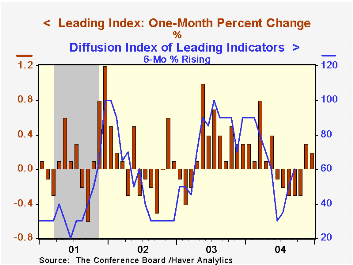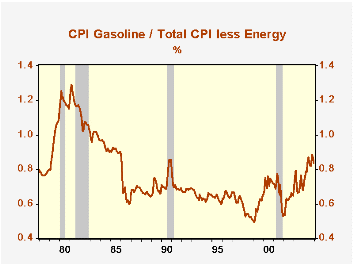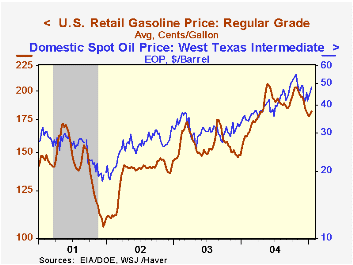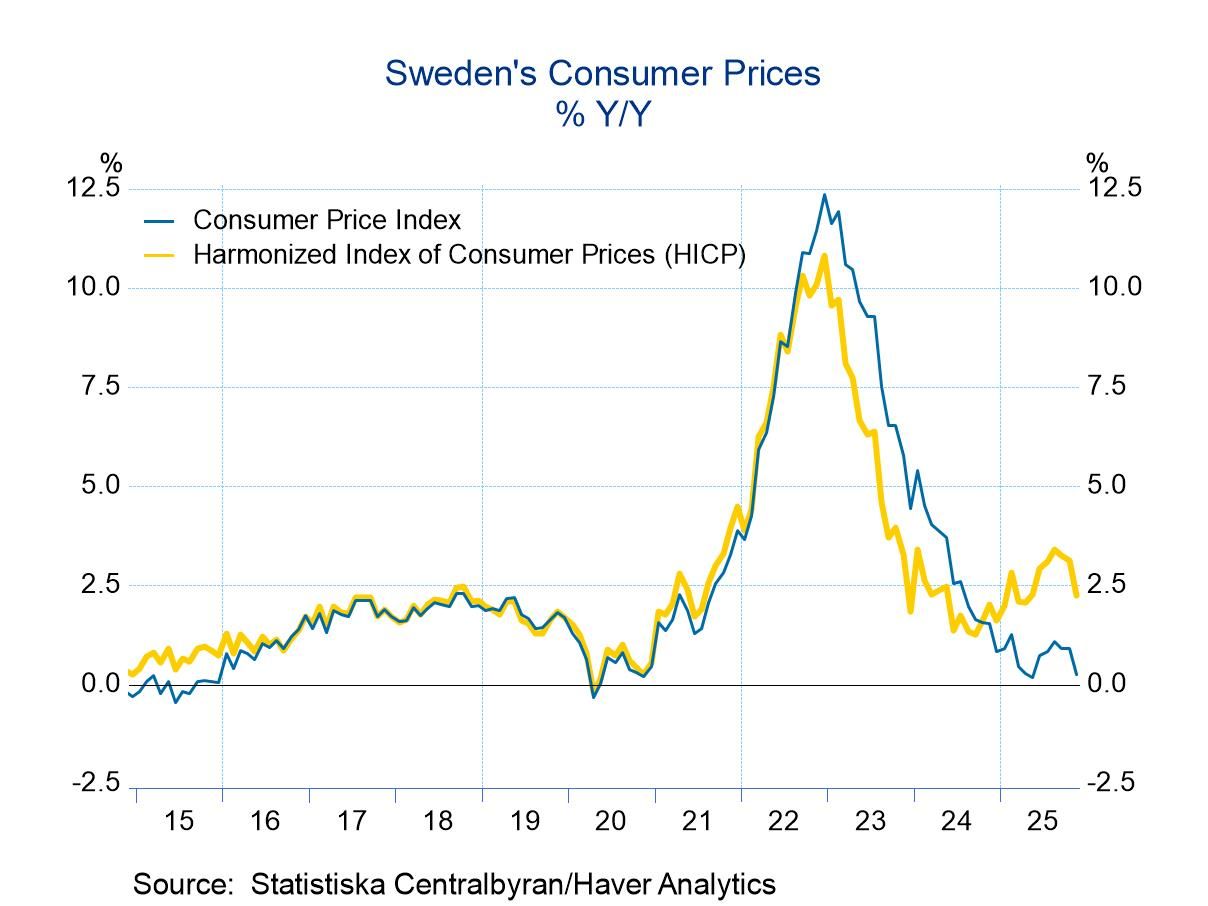 Global| Jan 20 2005
Global| Jan 20 2005Leading Indicators Rose Again
by:Tom Moeller
|in:Economy in Brief
Summary
The Conference Board reported that the Composite Index of Leading Economic Indicators rose an expected 0.2% in December following an upwardly revised 0.3% gain in November. The increases followed five consecutive down months during [...]

The Conference Board reported that the Composite Index of Leading Economic Indicators rose an expected 0.2% in December following an upwardly revised 0.3% gain in November. The increases followed five consecutive down months during 2004.
Six-month growth in the leaders stabilized at -1.4%. Six month growth in the leaders deeper than -2.5% preceded past US recessions.
The breadth of one month gain amongst the 10 components of the leading index narrowed to 45% from a widened 70% in November. However, the six month breadth improved to 60%, the best since May. The largest positive contributions were made in December by consumer expectations, stock prices and the money supply.
The leading index is based on eight previously reported economic data series. Two series, orders for consumer goods and orders for capital goods, are estimated.
A longer leading indicator, the ratio of the coincident to the lagging indicators which measures actual economic performance relative to excess rose again to a record high.
The coincident indicators rose 0.3% after an upwardly revised gain in November. The six-month growth rate rose to 0.5%. During the last ten years there has been an 82% correlation between the six month growth in the coincident indicators and two quarter growth in real GDP.
Visit the Conference Board's site for coverage of leading indicator series from around the world.
The latest Beige Book covering regional economic activity from the Federal Reserve Board is available here.
| Business Cycle Indicators | Dec | Nov | 6-Month Chg | 2004 | 2003 | 2002 |
|---|---|---|---|---|---|---|
| Leading | 0.2% | 0.3% | -1.4% | 2.8% | 1.3% | 2.2% |
| Coincident | 0.3% | 0.2% | 2.4% | 2.3% | 0.4% | -0.5% |
| Lagging | 0.0% | -0.3% | 0.8% | -1.0% | -2.2% | -2.8% |
by Tom Moeller January 20, 2005

The average price for unleaded regular gasoline firmed to $1.82 per gallon last week, up four cents from the low during the first week of January.
Through December, the price of gasoline relative to the nonenergy Consumer Price Index had fallen 5.6% from the high in October. The relative gasoline price also was down nearly one third from the high averaged during 1981. However, the 58% increase in the "real" price of gasoline during the last three years rivals the increase into early 1981.
The price of oil also firmed with the price of West Texas Intermediate crude last week rising to $48.39 from the lows below $42 last month. This week, crude oil prices have firmed another dollar.
Wholesale natural gas prices have moderated some. At $6.02/mmbtu last week, natural gas prices were down from last year's weekly highs over $7.00 but remained up from year ago levels.
For the latest Short Term Energy Outlook from the US Department of Energy click here.
Hard "Core" Inflation from the Federal Reserve Bank of St. Louis can be found here.
| Energy Prices | 01/17/05 | 12/31/04 | Y/Y | 2004 | 2003 | 2002 |
|---|---|---|---|---|---|---|
| US Retail Gasoline, Regular ($/Gal.) | $1.82 | $1.79 | 14.0% | $1.85 | $1.56 | $1.35 |
| Domestic Spot Market Price: West Texas Intermediate ($/Barrel) | $48.39 | $41.78 | 35.2% | $41.78 | $32.78 | $31.23 |
Tom Moeller
AuthorMore in Author Profile »Prior to joining Haver Analytics in 2000, Mr. Moeller worked as the Economist at Chancellor Capital Management from 1985 to 1999. There, he developed comprehensive economic forecasts and interpreted economic data for equity and fixed income portfolio managers. Also at Chancellor, Mr. Moeller worked as an equity analyst and was responsible for researching and rating companies in the economically sensitive automobile and housing industries for investment in Chancellor’s equity portfolio. Prior to joining Chancellor, Mr. Moeller was an Economist at Citibank from 1979 to 1984. He also analyzed pricing behavior in the metals industry for the Council on Wage and Price Stability in Washington, D.C. In 1999, Mr. Moeller received the award for most accurate forecast from the Forecasters' Club of New York. From 1990 to 1992 he was President of the New York Association for Business Economists. Mr. Moeller earned an M.B.A. in Finance from Fordham University, where he graduated in 1987. He holds a Bachelor of Arts in Economics from George Washington University.






